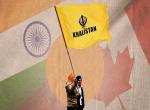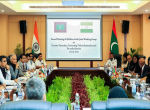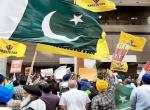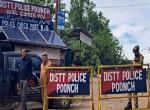Introduction
Extremists and terrorists have redoubled their efforts to pursue their ill-founded objectives of creating violence and instability across the globe. Of the last 16 years, the worst year for terrorism was 2014, with 93 countries experiencing an attack and 32,765 people were killed across the globe.1 Bulk of the casualties were caused by Islamic terrorists and Al Qaeda and Islamic State of Iraq & Syria (ISIS) were the main perpetrators of the violence. The groups like ISIS and Al Qaeda are more than just loose associations of radicalised fighters. Each has developed its own indigenous military capacity on the ground, maturing in certain countries from terrorist cells into full-blown insurgencies.2
The threats will grow at rapid pace because in some regions/ countries these terror organisations have sub-contracted their operations to mercenaries, criminals and warlords. Such a pan-global network would create vulnerability even where the terror organisations do not have their foot prints.
India is faced with multiple threats from religious and ideological, secessionist and separatists organisations. The threat is from Islamic terrorists, Left Wing Extremists (LWE), secessionist organisation from the North-East and now even from communal forces. The challenge before the state is to protect the citizenry of this country, prevent radicalisation or disaffection of the youth or sections of the population, prevent and deny recruitment of the youth into terror/ insurgent organisations, keep terrorists out of the society, deny their access to funds, weapons and safe havens, strip the terrorists from their roots and prevent networking between insurgent groups and various terror organisations. The entire gamut of counter-terrorism and counter-insurgency require wholesome government response. Disconnected and fractured approach by the Centre and State Governments, with each agency operating independent of the other, is certainly a directionless and procrastinating effort that is bound to fail.
Is Threat to India from Terrorism and Insurgency Real or a Myth?
It has become increasingly difficult for the governments to secure the nation from asymmetric forces that often remain faceless and amorphous. Terrorism and insurgencies have emerged as the most widely recognisable and visible threats to a nation’s security, especially after the 9/11 attacks.3 India is facing unprecedented threats from LWE who want to alter the established order and current democratic system of governance, separatists and Pakistan sponsored terrorists are pursuing a separatist movement in Jammu & Kashmir, the North-East is facing longest insurgency, and communal forces are engaged in creating unstable political and social environment. So far at a great cost to their lives, the security forces have managed to keep the violence level at manageable limit.
Non-state forces contest the governments over control of public and private space and institutions of governance, and raise public opinion against the current political system. Asymmetric forces have the potential to evolve as more potent hybrid threat if not managed and marginalised on time. So far, each of these separatist and secessionist movements are engaged in independent struggles but synergised efforts by insurgents and terror groups could pose a serious and grave threat to the nation. The strategy adopted by these non-state organisations is to destabilise the government through undermining its institutions.4 Their synergised efforts with help of proxies to pose hybrid threats can cause major vulnerability to the integrity and sovereignty of the nation.
There is endeavor by some insurgent groups to join hands for coordinated operations so that they do not work at cross-purposes with each other. Manipur insurgent groups have formed Coordination Committee (CorCom) consisting of Kangleipak Communist Party (KCP), Kanglei Yawol Kanna Lup (KYKL), People's Revolutionary Party of Kangleipak (PREPAK), PREPAK (Progressive), Revolutionary People's Front, and United National Liberation Front (UNLF). 5 Similarly, there is a new umbrella organisation that has been created to bring all major insurgent groups of the North-East India under one organisation that include insurgents from Assam, Manipur, Nagaland, and in future it may even include insurgents from Tripura and Meghalaya. This organisation is called th United National Liberation Front of West South East Asia (UNLFW).
Besides the National Socialist Council of Nagaland (NSCN)-Khaplang and United Liberation Front of Assam (ULFA)-Independent, other groups that participated in the meeting held at Taga in Sagaing division of Myanmar in 2015 were the KCP, KYKL, PREPK, People’s Liberation Army (PLA), UNLF and National Democratic Front of Bodoland (Songbijit faction).6 North-East insurgents have extended in-principle support to LWE. There is an endeavor to establish land bridge between insurgents of North-East and LWE for better coordination, supply of weapons, training of cadres and logistic support. There was specific intelligence input suggesting that representatives of the Maoists and the Manipuri rebel outfit, PLA, met in Kolkata. On 21 May 2012, the National Investigation Agency (NIA) filed a charge sheet in its Special Court in Guwahati against three arrested cadres of the PLA for “waging war against the country by indulging in terrorist activities, imparting training to the cadres of CommunistParty of India (CPI)-Maoist and supplying arms and ammunition to the outfit”.7 Reports indicate that the PLA was trying to forge a ‘Strong United Front’ (SUF) along with the CPI-Maoist and Kashmiri militants, backed by ISI and China.8
There is also a deep and cherished desire of colonisation of North-East by Bangladesh and that was brought to the notice of the President of India by Gen SK Sinha, the former Governor of Assam in a letter to then President Mr KR Narayanan. He had drawn attention to the fact that even a pro-India politician like Sheikh Mujibur Rahman had observed and said, "Because Eastern Pakistan must have sufficient land for its expansion and because Assam has abundant forests and mineral resources, Eastern Pakistan must include Assam in East Pakistan to be financially and economically strong."9 What needs to be taken very seriously is that four corridors of perils that are being exploited by terrorists and radicals to make inroads into India.
North-East and Bengal are emerging as major Jihadi corridors of peril. Al Qaeda affiliates from Bangladesh were reported in the past for having crossed over many times into Bengal when Bangladesh authorities were hot on their heels. Jamaat-ul Mujahideen Bangladesh (JMB) Harkat-ul-Jihad-al Islami Bangladesh (HuJI-B) and the Ansarul Islam dominate Bangladesh’s jihadist landscape today.10 The Arakan Rohingya Salvation Army (ARSA) is emerging as another threat because they are unhappy with the stand of the Government of India on denial of entry of Rohingyas on humanitarian ground. There is rise of anger amongst the Rohingya refugees against India for not being accommodative and also not using diplomatic pressure on Myanmar to stop persecution of Rohingya Muslims in the Arakan State.11
The second corridor of peril is Jammu & Kashmir which is facing Islamic terrorism sponsored by Pakistan. Terror attacks such as 26/11, Parliament Attack, Pathankot Air base attack etc. are testimony to their reach inside the heartland of India. The third corridor of peril is the peninsular India. Most of the ISIS and Al Qaeda affiliates, and the Indian Mujahideen have found their support base and cadres from the Peninsula. The call by Anwar al-Awlaki, an Al Qaeda leader to the cadres was not to rush to Syria or Iraq but start consolidating their positions in their own countries. Thus large number of radicalised youth may be staying back to start Islamic terrorism within India when called upon to do so.
The fourth corridor of peril is cyber space that acts as a major tool for self-radicalisation. It has grave implications for national security because to identify and track down self-radicalised youth is extremely difficult as they remain in dark till they execute acts of terror. Dr Rashmi Singh, the professor of International Relations at Brazil's PUC Minas says, “It is significantly harder to identify high-risk or radicalised individuals in society as opposed to groups propounding an extremist ideology. The challenges to fending off lone wolf terrorism is formidable, but not unsurmountable."12
There is always a lurking danger of revival of insurgency and militancy. Revival of insurgency in Punjab, Mizoram and Assam is a possibility because the idea has not been completely defeated and decimated. Revival of Peruvian insurgency is a case in point where it made return through convergence between ideologues, transnational criminal syndicates, drug and armed cartels. In fact, overlap of crime and terrorism presents significant challenges to international and national security.13 Building on the precedent set by narco-terrorism as it emerged in Latin America in the 1980s, use of crime has become an important factor in the evolution of terrorism.14 Such a convergence between the insurgents/ terrorists and criminal syndicates at some point in time does acquire political aspirations also. India must remain vigilant and prevent any ignition for revival of insurgency/ militancy in states that have been reclaimed.
Conceptual Understanding of Terrorism
There is a need to establish conceptual understanding of terrorism. Terrorism is a tactics adopted by radical or politically motivated groups or organisations. The strategy behind this tactics is replacing an established order by violence, coercion and deterrence. As a part of strategic initiative, terror organisations distort religion, the enshrined values of culture and historical facts in a manner similar to the Islamists terror organisations such as Al Qaeda and ISIS who have used religion to pursue the establishment of Caliphate. They seek to form a totalitarian empire devoid of political, economic, and religious freedom. To reach this goal, they use terrorism as a means of waging war against those who stand in their way - it could be governments, political parties, religious organisations and societal groups.15
The most worrying factor is that basic ideology of terror/insurgent organisations remain largely the same but their potential to create violence and destruction has increased manifolds. Methods have changed, and material access and technology that they can employ for acts of terror have increased manifolds. Their access to weapons, armed drones, artificial intelligence, cyber, nuclear, biological and chemical weapons is a reality and high probability. Terrorists have used every tool mentioned above except nuclear bomb, and that may not be too far, especially the use of dirty bomb. Under such a scenario, eliminating terrorists appear to be most visible action adopted by the governments. But in reality, elimination of terrorists is not elimination of terrorism.
Elimination of the terrorists after they have already executed acts of terror is a sign of fatigued strategy and collective failure of the counter-terrorism agencies. The states must understand that terror organisations are operating with the speed of broadband but responses are often predicted at bureaucratic pace. Such lethargic and status quo mindset is bound to fail and often give an impression that terrorists are wining and their strategies are succeeding. Today ISIS and Al Qaeda may be receding and being severed from their roots, but they are certainly not losing. ISIS and Al Qaeda have been able to create a perception that Islam and politics cannot be separated and that is giving them a religious legitimacy to political power. As a result, they are now in the position of resisting the existing states.16 They are finding new safe havens and new platforms.
Similarly, decline in casualties and acts of violence is not a sign of defeat of the ideology of LWE in India. Now they are breaking new grounds by making inroads into urban areas. Urban Naxals are the ‘invisible enemies’ of India17 and therefore, cannot be brushed aside as a weak and feeble attempt to shake the foundation of the state. The LWE may not have made substantial inroads but mere fact that they are now in the process of gaining foothold in urban areas is a threat in being that can act as lynchpin for spread of LWE across the nation. Thus counter-strategy to deal with future threats to the democratic states is from the terror and insurgent groups that may join together for their larger objectives.
Understanding conceptual aspect of terrorism is as important as putting counter-terrorism structures on ground. Unless the counter-terrorist forces understand strategy, organisation objective and tactics of terror and insurgent groups, it is very difficult to severe the terrorists from their roots and starve them for funds and resources.
Perception of Victory in Terrorism
The war against terrorism is not short and complacency is suicidal. Even where insurgency or terrorism is eliminated, state should not lower the guard; terrorism could re-emerge from unknown quarters and with different character. The terror and insurgent organisations propagate their victory by making their presence felt through acts of violence, continuous recruitment of cadres and ability to mobilise the public support. Ability of terrorists to remain in ‘dark’ and so ‘blind’ the security and intelligence agencies is a strength and ability to be ahead of the state machinery. Events such as New York 9/11 and Mumbai 26/11 are not to achieve decisive victory but to propel these organisations to the global platform and proclaim that they have arrived. They reinforce the faith of their cadres and support base with the false promise of deceive victory. While doing so, the terrorists are “going dark,” causing law enforcement agencies to “go blind.” This phenomenon is one of the greatest counter-terrorism challenges of the 21st century that is making it harder to stop acts of terror.18
Victory for the state is the ability to roll back terrorism and insurgency, end violence, demobilise cadres and deny space for re-emergence of terror and insurgent groups. It may not be possible to completely break and defeat the ideology, but it can be decimated to the extent that it loses the energy and space to resurface in near future. Terrorism in Punjab is one example where the ideology may not be completely destroyed or defeated, but it has been decapitated and has lost relevance for the people of Punjab. The support base and availability of cadres have dried up and in public perception it is a futile endeavor of few fanatic self-serving individuals. However, one must look at the drug trade in Punjab with skepticism. It has opened a new threat and the same ideology can sneak in through surrogate strategy of outsourcing of terrorism to drug warlords.
Response Mechanism Require De-Novo Look
Though terror and insurgent organisations are always ahead of the security forces and law enforcement agencies, yet, India’s response mechanism, doctrinally and structurally, is inadequate. Considering the vast spectrum of threat to internal security, issues discussed in the following paragraphs require immediate attention.
Doctrinal Understanding of Asymmetric Threat
There is a need to understand the internal security challenges from conceptual and doctrinal point of view. Today security forces including army is engaged in dealing with internal security without a doctrine and concept of operations. Armed Forces Special Power Act (AFSPA) is not a doctrine, it is a legal provision under which the army is deployed in a disturbed area. It is irony that our response to hybrid and asymmetric threat is always conservative. This is because there is absence of doctrine, concept of operations and unified command structure, whereas all forces engaged in such conflict should be following a single operational command and same operational strategy guided by a doctrine.
Diverse and Fractured Command Structure
There are three different command streams that guide the forces operating in same operational space. Army operates under Ministry of Defence (MOD), the Central Armed Police Forces under the Ministry of Home Affairs (MHA) and the State Police under respective states. Intelligence agencies are not directly responsible to the field commanders responsible to fight insurgency or terror organisations. Such compartmentalised approach only give credence to empire building rather than protecting national interests. This result in undercutting each other for results. Intelligence agencies ambush sources and often lead to multiple agencies coming out with same intelligence originated from same source thus giving false impression of credibility.
Who is responsible for Policy Formulation and Strategic Guidance?
Dealing with hybrid war and asymmetric threats is complex and require lifelong hands-on experience of study and practice. While delivering the 31st Sapru House Lecture (SHL) H.E. Mr. Pushpa Kamal Dahal ‘Prachanda’ said that he took 10 years to understand the war and its after effects being the Commander of the Communist Party of Nepal-Maoist (CPN-M), but he took 12 years to understand how to convert war into peace.
In light of the above facts, the Indian political leadership is neither formally trained, nor do they have deep understanding of the conflict management and conflict resolution in an armed conflict. As a result, they bank upon the bureaucracy to do the job of policy formulation, and operational and strategic direction for conduct of counter-terrorism and counter-insurgency operations. Conflict management per se is a subject that require in depth knowledge and collective efforts of social scientists, professionals, academicians and eminent experts from the society. The bureaucrats who command clerks are suddenly burdened with command of security forces and guide them on the basis of privileged information.
There cannot be more ambiguous system then what is being followed by a nation that is fighting insurgency and terrorism for the past several decades and have no dearth of professionals and academicians with deep understanding of contours of conflict. The professionals, social scientists and operational commanders are neither integrated nor part of decision making process, and as a result more often the apex body of decision making mobilises only when there is crisis. Decision by such a body is often arrived at without empirical examination of the problem. Such a policy lacks vision and understanding of the nature of threat. There is a need for perspective planning to deal with emerging internal security threats and government should look at internal security as a major challenge through a de-Novo structure.
Internal Security Threats are not Entirely a Security Problem
It is a flawed outlook to view the problem of insurgency in North-East, J&K and LWE as purely an armed conflict or through the prism of counter-insurgency and counter-terrorism operations. Elimination of terrorists is not the elimination of terrorism. Out-terrorising the people and insurgents by employing overwhelming conventional forces is unlikely to work. Edward Luttwak had said, “Insurgents do not always win, but their defeats can rarely be attributed to counter-insurgency operations”. 19 The Indian security establishments and policy makers must realise that there are several paradoxes of counter-insurgency operations that distinguish them from conventional combat. These are:-20
- Sometimes, the more you protect your force, the less secure you may be.,/li>
- Sometimes, the more force is used, the less effective it is.
- The more successful counter-insurgency is, less the force can be used and more the risk accepted.
- Sometimes doing nothing is the best reaction.
- Some of the best weapons for counter-insurgents do not shoot.
- If a tactic works this week, it might not work next week.
- If it works in this province, it might not work in the next.
- Tactical success guarantees nothing.
- Many important decisions are not made by political leaders or policy makers. They could be taken by the foot soldiers on the ground with common professional wisdom.
Operate from Within the Ground Zero
India’s counter-terrorist units and counter-insurgency units often operate from closed garrisons and barracks. This is not going to give them the bird’s eye view of what is happening on ground. The counter-terrorist forces should have eyes and ears connected to the ground. They must have their pointsmen on the ground living with the trouble makers or else they will operate against faceless non-state actors without information. Principle of counter-terrorist operations is to ‘go dark to operate from darkness’. They always maintain presence in trouble spots by being in shadow. The counter-terrorist forces must have their men living and operating from the bad lands of Bengal, Assam, Kerala, J&K and the areas of influence of IM if they don’t want to be blinded by faceless and amorphous terror organisations.
Intelligence should be Integral to Counter-insurgency and Counter-terrorist Forces
The Counter-insurgency and counter-terrorist forces should have representatives of intelligence agencies integral to their organisations so that they update the force on daily basis about the critical intelligence of likely trouble spots and area of deployment. Sharing of intelligence at the time of crisis has lesser significance since forces are more often pre-occupied in preparation, briefing and contingency planning. Burdening these forces with the basic intelligence, unless actionable at the time of mobilisation, in reality is disorienting them from the main task. These details and discussions should in reality be carried out prior to the mobilisation and during the alert period. Intelligence set up should be integral and accountable to the operational commander so that these forces are not launched in the darkness. Field units of the Intelligence Bureau should be responsible to the operational commanders on the ground and should ideally give urgent and important inputs to the field commanders at appropriate levels regarding the emerging threats.
Incorporation of Technology and Artificial Intelligence
Technology is replacing human intelligence with much greater efficiency to control crime on the streets and also prevent terrorist attacks against innocent, unarmed and unaware civil population.21 Artificial Intelligence is a tool that can resolve large number intelligence problems and give real time information. Some Western counties have made big progress in absorption of technology to deal with the criminals and terrorists. UK Police has been able to predict likely trouble and crime spots by using Big Data. They are using the Harm Assessment Risk Tool (HART) that contains information on a person’s past offending history, age, postcode and other background characteristics through algorithms that then classify them as a low, medium or high risk.22 There is a need to put in place face recognition system so that a criminal or terrorist can be identified whenever he is exposed to the system. Similarly, even the human gait identification system could be added as additional layer if the subject individual has undergone alteration of facial contours.
Idea cannot be Killed by the Gun
It is easier to eliminate terrorists by the gun but it is difficult to eliminate idea. Terrorism in Punjab is defeated but the idea of Khalistan continue to simmer and is still alive in some quarters. The idea is kept alive not only in India but even in the institutional memory of Sikhs living in UK and Canada. Similarly, LTTE may have been defeated and decimated but aspirations and grievances of Tamils of Sri Lanka are yet to be resolved. Thus to eliminate terrorism and insurgency there is a need to eliminate the idea as well by a superior strategy, narrative and ideology.
Conclusion
Internal security threat to India is becoming more pronounced and the chances of regrouping of non-state actors along with transnational criminal syndicates cannot be ruled out. It is high time that capabilities are built, doctrinal issues are resolved and a structured approach is formulated so that nation is not surprised. Collateral damage and economic impact of terror strikes are severe. Mumbai attacks cost India close to $100 billion in terms of disruption in economic activities, foreign direct investment, destruction of infrastructure and subsequently, the cost on securing vital infrastructure.
The current policy of dealing with internal security through bureaucracy is completely out of sync and outdated. The terrorists are changing their strategies on daily basis and a state cannot fight such huge continuous wars with bureaucratic pace. There is need to unify the resources, command structure and strategy to deal with the threat that will have far reaching consequences for the country. Accountability of border guarding forces, intelligence agencies and commanders nominated for dealing with counter-terrorist and counter-insurgency operations should be fixed.
There is a need for a national war research centre to deal with the unforeseen threats and prepare the response mechanism required thereof. The MHA and MOD must sort out doctrinal issues related to internal security, because it has implications on implementation of military doctrine for war. This is a war that India will have to prepare to fight every day. Success of mission against insurgents and terrorists, for the foreseeable future, should be in the hands of a well-trained and equipped counter-insurgency force.23 But the success of counter-insurgency and counter-terrorism operations should be on as to how well all stake holders are able to come together to severe the roots of terrorists from their safe havens, dry up funds and recruitment of cadres and isolate them from their mass support. Therefore, this task is not restricted to security forces, rather all organs of the state, including law enforcing agencies and judiciary who will have to come together and fight from the common platform.
End Notes:
- Global Terrorism Index (GTI) 2016, Measuring the Impact of Terrorism, Report by Institute for Economics and Peace, P 35.
- A National Strategy to Win the War against Islamist Terror, Report by House Homeland Security Committee of the US, September 2016.
- Divya Srikanth, Non-Traditional Security Threats in the 21st Century: A Review, International Journal of Development and Conflict, P 62.
- GTI, N 1.
- Here's a guide to newly-formed insurgent group UNLFW that killed 20 Jawans in Manipur, Firstpost, Jun, 05, 2015.
- Rezaul H Laskar, Nine militant groups of NE form united front with Chinese blessings, Hindustan Times, Apr 24, 2015.
- Sushanta Talukdar, Nation in a State: Seeing Red in the Northeast, The Hindu, MAY 25, 2012
- Arup Chanda, Assam governor asks Centre to seal Bangladesh border, rediff on the net, Feb 13, 1999, accessed on August 09, 2012.
- Ibid.
- Countering Jihadist Militancy in Bangladesh a Report Published by International Crisis Group on Feb 28, 2018.
- Narender Kumar, Jihadi Threat to India is Real and Enduring, USI of India, Sep, 06, 2018.
- Archana Masih, 'Global jihad does indeed threaten India', Accessed from http://www.rediff.com/news/interview/global-jihad-does-indeed-threaten-india/20170605.htm on Oct 13, 2018.
- Cilluffo, The Threat Posed from the Convergence of Organized Crime, 1–2.
- Tamara Makarenko, the Crime–Terror Continuum: Tracing the Interplay between Transnational Organised Crime and terrorism, Global Crime Vol6, No.1, Feb 2004, P 129-145.
- Ibid P 5.
- Mohammad-Mahmoud Ould Mohamedou, A Theory of ISIS, Pluto Press, 2018, P 108.
- Vivek Agnihotri, Urban Naxalism: Strategy And Modus Operandi – Part 1, Swarajya, May 04, 2017.
- Report of Homeland Security, N 2.
- Raj Shukla, Review Article Counter-Insurgency Warfare as Military malpractice by Edward Luttwak published in CLAWS Journal Summer 2012.
- Keith Pavlischek, The Ethics of Counterinsurgency, The New Atlantis, A Journal of Technology and Society, Number 23, Winter 2009, P 13-24.
- Narender Kumar, India Requires Technologically Driven Approach for Internal Security, USI of India Strategic Perspective.
- Lizzie Dearden, “How technology is allowing police to predict where and when crime will happen”, Independent, October 07, 2017, accessed Jul 14, 2018, https://www.independent.co.uk/news/uk/home-news/police-big-data-technology-predict-crime-hotspot-mapping-rusi-report-research-minority-report-a7963706.html
- Keith N 20.
(The paper is the author’s individual scholastic articulation. The author certifies that the article/paper is original in content, unpublished and it has not been submitted for publication/web upload elsewhere, and that the facts and figures quoted are duly referenced, as needed, and are believed to be correct). (The paper does not necessarily represent the organisational stance... More >>











Post new comment